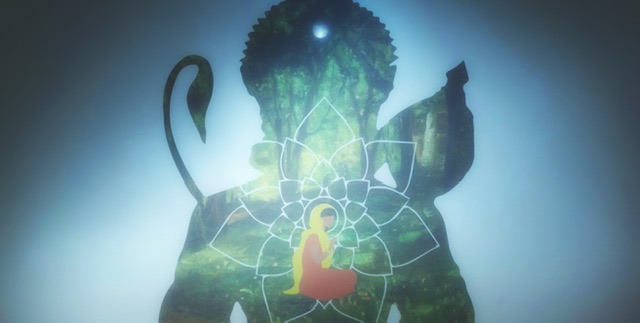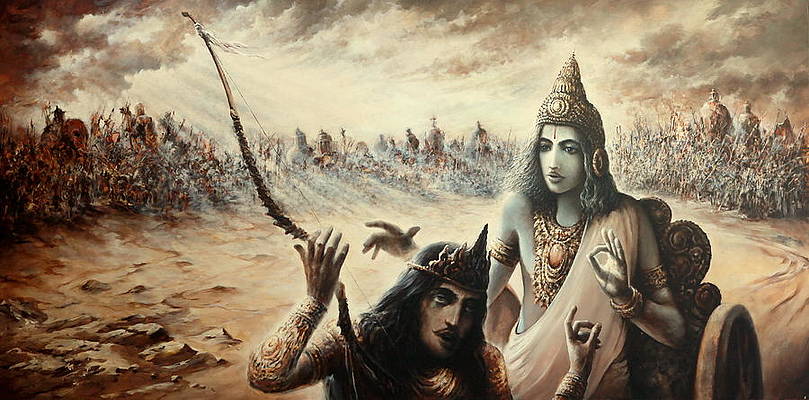The cow enjoys a place of pride in vedic culture and heritage. Tradition has it that the Indian cow is the abode of 33 crore deities! Every part of its body is known to be the dwelling place of some divinity. The very syllable ‘GOU’ signifies the VEDAS. Thus, one who understands the Vedas and also understands the real and hidden value of the cow is called GOVINDA.
Our ancestors were not as ignorant as we are. Most so-called superstitions that have been handed over to us through generations of additions and subtractions of their own uninitiated value, were actually very logical and practical laws of nature that were known to work. In all probability, these pieces of wisdom were defined as rules for the masses to benefit from if only they followed them. Sadly, these rules through generations of being passed down lost the real wisdom that formed them in the first place and became ‘superstitions’ that were to be disregarded by the modern minds. We cannot be blamed for what we see seems to be greater than what we do not see. But just turn it around a bit and you’ll realise that what we do not see is infinity…And like many logics that we discard, scoffing at ancient wisdom as primitive, the benefits of cows happen to have fallen prey under the same head.
Logic, facts, statistics and science all point towards the efficacy and importance of a cow. In a country like India, where 70% of the population resides in villages and thrives on agriculture, it only makes sense to revisit what our ancients had to say.
Thanks to the not-so-green revolution, Indian farmers have been subjected to use BT seeds that do not re-germinate themselves through pollination, while western countries maintain locked and sealed vaults of heirloom seeds. To sustain these crops an added dose of chemical-laced fertilisers and insecticides is used, leading to high costs for the farmer and unheard of diseases for the consumer. Ever wondered why diseases like cancer, brittle bones, spondylitis, vitamin & mineral deficiencies, balding, early ageing are on a rise? It is because no matter how much spinach you eat for iron or carrot for vitamin A, what you are eating is chemical.
Every microcosm of nature is significant and plays a pivotal role in maintaining the balance in creation – be it man, trees, cows or even insects. Our ancestors knew that 99% of the insects are beneficial to the ecological system. Insecticides prepared from cow urine or well-fermented butter milk do not harm these helpful insects. Fertilisers and organic manures, green leaf manure, earthworms, and slurry manure with cattle manure bond with nature and make the land fertile. They do not create the challenge of chemical waste. Also while ploughing, the oxen stride with gentle gait, not harming the surface of the earth, unlike tractors.
Dung from a single cow is adequate to fertilize 5 acres of land, while its urine can protect 10 acres of crop from insects.
There’s more…
Transportation: In the year 2004-05, Indian Railways transported 55.7 crore tonnes of goods, while the humble ox carts transported 278.5 crore tonnes. In the same year, trains moved 511.2 crore passengers, while ox carts had 2044.8 crore customers. The hilly terrain and deserts where railways fail to reach out to, the ox carts are still the most dependable, economical and convenient mode of transportation.
Biogas plants: India has approximately 20 crore cattle. Using their dung to produce biogas, we can save 4 crore tonnes of firewood every year. This would arrest deforestation to that extent. Poor families of rural and backward areas can earn `18500 per year by installing biogas plants of their own, from the dung of the dried cows and bullocks.
Organic fertilisers and manure: We receive 36 bags full of urea, 18 bags of super phosphate and 54 bags full of potash from a single cow or the bull’s dung alone. A dried cow (not milking) alone yields every year 2 tonnes of cow dung and urine to the society at large. We have 22 lakh tonnes of cattle dung, worth `55 crores per day. Lakhs of tonnes of cow urine (an indigenous natural disinfectant) is available every year, which is the best disinfectant for our crops and for use in medicines for the cure of several diseases.
Milk: India has 150 million cows, each of them giving an average of less than 200 litres of milk per year. If they could be fed and looked after, they can give 11,000 litres like Israeli cows do. That would provide milk for the whole world. The milk we produce today is the cheapest in the world. With enhanced production we could become the world’s largest exporter of milk and it could be India’s biggest foreign exchange earner.
Medicine: If it is not sufficient to know that many US companies are trying to patent the cow urine, it may interest you that it has been proven that cow urine helps in curing diseases like AIDS and Cancer. Cow dung has antiseptic, anti-radioactive and anti-thermal properties. When we coat the walls and clean the floors of a house with cow dung, it protects the dwellers. In 1984, a gas leak in Bhopal killed more than 20,000 people. Those living in houses with cow dung-coated walls were not affected. Atomic power centres in India and Russia even today use cow dung to shield personnel from radiation.
It is not surprising then that cows alone add to the national income to the tune of `15000 crores. Maybe it is time we look back to the immense repertoire of our ancient wisdom and use it to our advantage because they knew that man was part of the creation, and unless we protect the creation as whole, there’s not much chance for our own survival. With Diwali and Children’s Day knit so close together, Anand Vidyalaya branches across the country were all set to stir up a frenzy of events. From diya painting, to making diwali decorations, designing colourful rangolis to visiting noteworthy places in their cities, the entire week saw the kids wrapped up in fun-filled activities. Apart from fun they also learned the relevance of these festivals and the figures connected with them through paintings and storytelling sessions. From the return of Lord Ram to Ayodhya, the triumph of good over evil and the festival of lights to the birth anniversary of Pandit Jawaharlal Nehru and the struggle for independent India – at Anand Vidyalaya fun always has a streak of wisdom.
Benefits of Panchagavya
- Milk: The ‘Charaka Samhita’ states, “Milk is the best life strengthener.” While casein protein in milk helps growth of infants, calcium and sulphur strengthen our bones. Milk is also rich in vitamins D and B-complex
- Curd arrests diarrhea, controls fat and resists cancer
- Ghee improves intelligence and beauty. It is used to treat eye diseases
- Distilled cow urine is effective in the treatment of flu, arthritis, bacterial diseases, food poisoning, indigestion, oedema and leprosy
- Panchagavya Mix: Various medical formulations like Panchagavya Ghrita, Amritasara, Ghanavati, Ksharavati, Netrasara etc. are invaluable medicines in the Ayurvedic system
- We can depend on Panchagavya – milk, curd, ghee, cow urine and cow dung. These have excellent medicinal qualities individually as well as a concoction, without any adverse side-effects. In addition, if we are already under some other medication, consumption of panchagavya acts as a catalyst
- Ancient books on Ayurveda state that consumption of cow urine increases resistance to diseases by up to 100%





